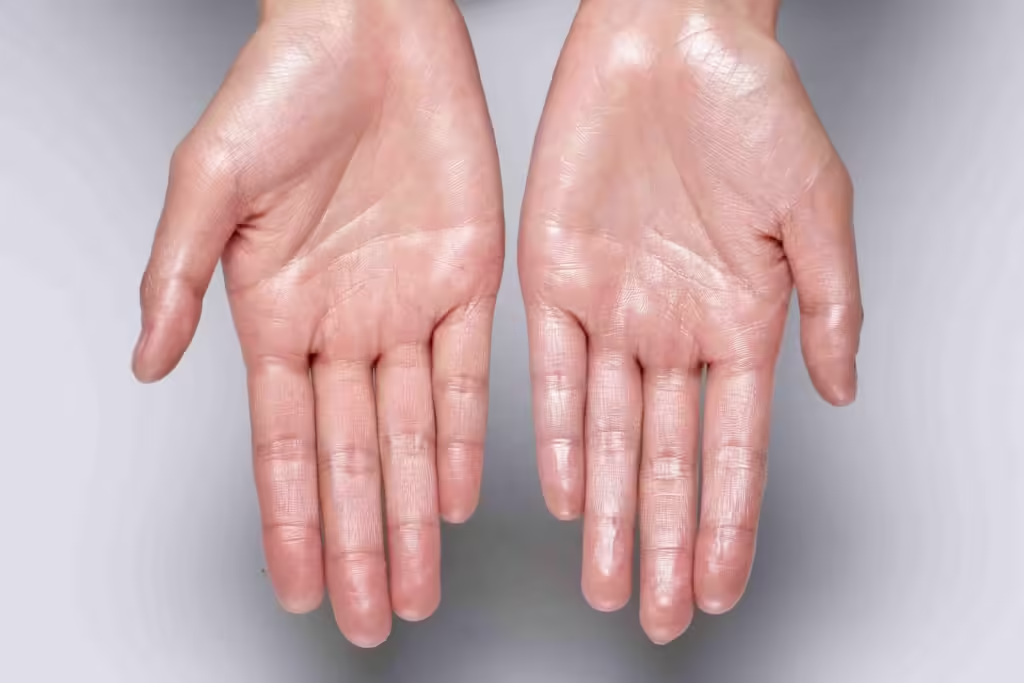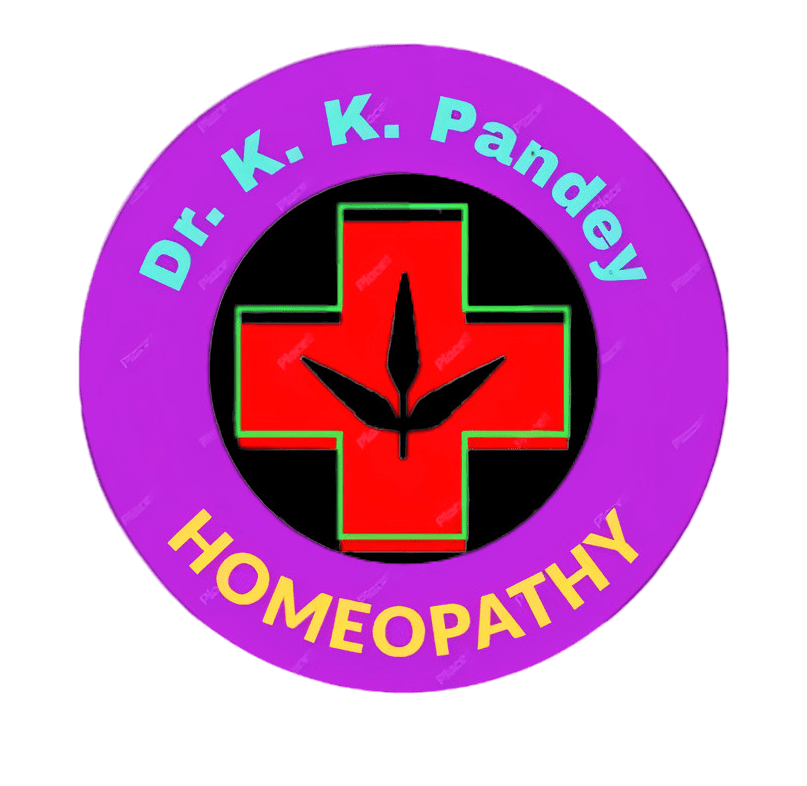
We discus about hyperhidrosis lotion to relief hyperhidrosis for its natural treatment.
Hyperhidrosis: Unraveling Excessive Sweating
Hyperhidrosis refers to the condition where the body perspires excessively, far beyond what is required for thermal regulation. It often arises without any clear trigger and can leave one feeling self-conscious or uncomfortable. Despite its troubling nature, it is a prevalent issue that healthcare professionals can address with a variety of treatments, including specialized antiperspirants, medications, or therapies tailored to control the symptoms.
What is hyperhidrosis?
It is characterized by perspiration that exceeds the body’s thermal regulation needs. This condition may manifest even in the absence of heat or physical exertion—meaning one could sweat unexpectedly during moments of rest or in cooler environments.
Sweat, naturally an odorless secretion from the eccrine glands, serves to regulate body temperature. Once released from the glands, it travels through ducts and evaporates upon reaching the skin’s surface, thereby cooling the body. However, in hyperhidrosis, these glands are hyperactive, producing sweat even when unnecessary.
Types of Hyperhidrosis:
– Primary Focal Hyperhidrosis: This is a chronic, inherited condition affecting specific areas like the underarms, hands, feet, and face. Typically, it emerges before age 25.
– Secondary Generalized Hyperhidrosis: Caused by underlying medical issues or as a side effect of medications, this form results in excessive sweating, often even during sleep. Conditions like diabetes, Parkinson’s, or medications such as naproxen can trigger this type.
Prevalence:
Hyperhidrosis is not a rare occurrence, affecting an estimated 3% of U.S. adults between 20 and 60 years old.
Symptoms and Causes
Common Symptoms:
– Persistent wetness on the skin
– Clothing soaked with sweat
– Beads of perspiration on the face or forehead
Over time, these symptoms may be accompanied by itching, skin irritation, body odor, and peeling or cracked skin, particularly on the feet. The severity can fluctuate, from mild and occasional to constant and disruptive, potentially impacting one’s quality of life.
This condition may also take an emotional toll, as many feel embarrassed or socially isolated due to the excessive sweating. If mental health is affected, it is important to seek professional assistance to manage both the physical and emotional symptoms.
Areas Most Affected by Hyperhidrosis:
The body’s eccrine glands, responsible for sweat production, are most concentrated in the following regions:
– Underarms (axillary hyperhidrosis)
– Feet (plantar hyperhidrosis)
– Palms (palmar hyperhidrosis)
– Face (craniofacial hyperhidrosis)
– Genital area
– Lower back
The palms are the most frequently affected area.
Triggers of Hyperhidrosis:
Several factors may provoke excessive sweating, including:
– Emotional triggers such as anxiety, stress, or nervousness
– Warm environments or high humidity
– Physical activity or exercise
– Certain foods and drinks, particularly spicy or high-protein items, caffeine, and alcohol
Causes:
Hyperhidrosis stems from overactive sweat glands. While sweating is a natural response to heat or exertion, those with this condition perspire unpredictably, often without any external trigger. Ongoing research seeks to uncover the precise mechanisms behind this excessive gland activity.
Medications That Can Trigger Sweating:
– Albuterol
– Bupropion
– Hydrocodone
– Insulin
– Levothyroxine
– Lisinopril
– Naproxen
– Sertraline
If hyperhidrosis occurs while on these medications, consult a healthcare provider before discontinuing their use.
Medical Conditions Linked to Hyperhidrosis:
Secondary hyperhidrosis could signal underlying health issues such as:
– Acromegaly
– Infections like tuberculosis
– Anxiety disorders
– Cancer
– Diabetes
– Heart disease
– Hyperthyroidism
– Menopause
– Obesity
– Parkinson’s disease
Diagnosis and Tests
To diagnose hyperhidrosis, healthcare professionals will examine your medical history and symptoms. If excessive sweating has persisted for six months or longer and meets at least two of the following criteria, a diagnosis may be made:
– Occurs symmetrically on both sides of the body
– Does not interfere with sleep
– Episodes last at least one week
– A family history of hyperhidrosis
– Onset typically occurs before the age of 25
– Interferes with daily life
Diagnostic Tests:
– Starch-iodine test: Iodine is applied to the skin, followed by starch. Areas with excess sweating will turn dark blue.
– Paper test: Special paper absorbs sweat, and its weight is measured to quantify the amount of perspiration.
– Blood or imaging tests: These help pinpoint potential underlying causes.
Management and Treatment
1. At-home Treatments:
– Antiperspirants: These work by blocking sweat glands. Over-the-counter or prescription-strength antiperspirants, often containing aluminum, can be effective.
– Frequent showers: Bathing regularly can alleviate mild symptoms.
– Breathable clothing: Natural fabrics like cotton can help reduce sweating, whereas synthetic blends can exacerbate the issue.
2. Medications for Hyperhidrosis:
– Anticholinergic agents
– Antidepressants
– Beta-blockers
– Medicated wipes
– Aluminum chloride gels
3. Homeopathic Treatment
Here are five commonly used homeopathic medicines for managing hyperhidrosis (excessive sweating), along with their primary indications:
1. Calcarea Carbonica
– Indications: For people who sweat profusely, especially on the head, neck, and scalp. The sweat is often cold, clammy, and can be sour-smelling. This remedy is particularly helpful for individuals who feel easily exhausted, are sensitive to cold, and may be overweight.
2. Silicea
– Indications: Useful for individuals who experience excessive sweating on the palms, soles, and armpits. The sweat may have an unpleasant odor, and they often feel cold even in warm conditions. Silicea is also ideal for people who tend to be thin, nervous, and have a weak immune system.
3. Mercurius Solubilis
– Indications: Best suited for people who sweat excessively all over the body, especially at night. The sweat can be oily, offensive, and may stain clothing. This remedy is typically recommended for those who are irritable, feel both hot and cold easily, and often suffer from gum or throat infections.
4. Sepia
– Indications: Ideal for people with excessive sweating, primarily during physical exertion or from slight movements. The sweat is often localized around the armpits and may have a strong, offensive odor. This remedy works well for those with low energy, hormonal imbalances, or mood swings.
5. Belladonna
– Indications: Recommended for individuals who experience sudden, intense sweating, especially during fevers or heat exposure. The sweat is typically concentrated on the upper body and is accompanied by a flushed face, rapid pulse, and heat sensitivity. This remedy suits people who feel restless and may experience throbbing headaches.
Each of these remedies should be used based on an individual’s unique symptoms and constitution. Consulting a qualified homeopathic practitioner is advised for accurate diagnosis and dosage.
Hyperhidrosis Lotion: (Aluminum chloride gels)
Hyperhidrosis is a condition characterized by excessive sweating, which can affect various parts of the body such as the hands, feet, underarms, or face. For those dealing with this condition, using a hyperhidrosis lotion can be a helpful solution. These lotions are specifically formulated to reduce sweat production and control moisture, providing relief from discomfort and embarrassment.
The active ingredient in most hyperhidrosis lotions is aluminum chloride or aluminum zirconium. These compounds work by temporarily blocking the sweat glands, reducing the amount of sweat that reaches the skin’s surface. Some lotions also contain soothing agents like aloe vera or chamomile to calm irritation and keep the skin hydrated.
When applying a hyperhidrosis lotion, it’s important to follow the instructions carefully. Most products recommend applying at night when sweat glands are less active, allowing the lotion to penetrate and take effect. Regular use can lead to noticeable improvements in sweat control.
Hyperhidrosis lotions offer an accessible, non-invasive option for those who want to manage excessive sweating without resorting to medical procedures. They can significantly enhance comfort and confidence, making everyday activities more manageable for individuals with hyperhidrosis.
Therapies for Severe Hyperhidrosis:
– Iontophoresis: Involves immersing hands or feet in water while an electrical current is passed through, gradually reducing sweat production.
– Botox injections: Temporarily paralyzes sweat glands.
– Microwave therapy: Uses heat to permanently destroy sweat glands in targeted areas.
Surgical Options:
When other treatments fail, surgery may be considered. Options include:
– Endoscopic Thoracic Sympathectomy (ETS): This minimally invasive procedure cuts nerves to halt sweat signals.
– Sweat gland removal: This can be done via laser, excision, curettage, or liposuction.
Prevention and Prognosis
Though there’s no definitive way to prevent it, treating underlying health conditions can help manage secondary forms. Primary focal hyperhidrosis, being genetic, is harder to prevent. There is no outright cure for hyperhidrosis, but treatments are available to manage the symptoms and improve one’s quality of life.
Living with Hyperhidrosis:
This condition, while not life-threatening, can significantly affect daily life and self-esteem. If it begins to negatively impact mental health or social well-being, seeking support from both medical and mental health professionals can provide relief.
Questions to Ask Your Doctor:
– What might be causing my symptoms?
– What treatment options are best for me?
– How soon will I notice improvement after starting treatment?
– How can I better manage my mental and emotional health?
F&Q
- How did I cured my hyperhidrosis face?
Ans: My Journey to Managing and Curing Facial Hyperhidrosis
1. Understanding My Condition:
– Initial Struggles: Describe when you first noticed the excessive facial sweating, how it impacted your daily life, and any physical or emotional challenges it created. Mention specific situations, like social interactions or work, where hyperhidrosis became particularly difficult.
– Seeking Help: Talk about how you decided to address the issue. Did you consult a doctor, look for online resources, or talk to others with hyperhidrosis?
2. Trying Various Treatments:
– Over-the-Counter Options: Share any lotions, antiperspirants, or wipes specifically designed for hyperhidrosis that you tried. Mention which ones helped and which ones didn’t.
– Homeopathic and Natural Remedies: If you tried any natural methods (like herbal supplements, dietary changes, or essential oils), explain what you used and any benefits you experienced.
– Medical Options: Detail any prescription treatments, such as anticholinergic medications, Botox injections, or iontophoresis. If these helped reduce the symptoms, discuss the pros and cons you encountered.
3. Lifestyle and Routine Adjustments:
– Diet and Hydration: Mention any dietary changes that reduced your sweating, like cutting down on caffeine, spicy foods, or alcohol. If staying hydrated made a difference, explain how it helped.
– Managing Stress: Since stress can trigger sweating, you might describe any relaxation techniques, like meditation, breathing exercises, or yoga, that helped you stay calm and minimize sweating.
– Hygiene and Skincare: Talk about any skincare routines, face wipes, or powders that helped keep your face fresh and reduced sweating.
4. Finding the Right Solution:
– Describe the breakthrough moment or combination of treatments that worked best for you. This could be a particular product, a lifestyle change, or a more advanced treatment. Detail how long it took to notice results and any improvements you saw.
5. Living Hyperhidrosis-Free:
– Share how your life changed once you managed or cured your facial hyperhidrosis. Describe the relief, increased confidence, and new opportunities you felt afterward.
6. Advice for Others:
– Offer encouraging words for others struggling with hyperhidrosis. Suggest that they keep trying different methods and remind them that finding a solution takes time.




